More than most cities in the U.S., Memphis and the Mid-South’s main lawn management problem is weed control. Our fertile climates and rich soils are the perfect home for weeds to grow and fester. Our mantra from day one has always been to know more about the physiology of weed systems than any other company in the Mid-South, and most importantly, know more about how to kill them. Our lawn care experts are the best at lawn weed control in Memphis.
Contact a Lawn Care ExpertTypes of Weeds
Identifying weeds can be difficult. One must consider several items: the maturity of the weed, the place it is found, and the time of year it emerges. Throughout the Memphis area there are three types of weeds: broadleaf weeds, grassy weeds, and sedges. A homeowner’s choice for the best weed control in Memphis, including appropriate herbicides, is dependent on the type of weed you have in your yard. Our weed control in Tennessee offers you superior service and advice when it comes to getting rid of weeds.
Broadleaf Weeds
Broadleaf weeds are easiest to identify. Like dandelions and clover, they are distinctive from and not botanically related to grasses and sedges. As the name indicates, broadleaf weeds have leaves that are broad and are generally produced in pairs or multiples. The leaves of these weeds are detached from the main stem by a sub-stem or petiole. Their leaves may be simple with one leaflet, like a dandelion, or they may be compound having more than one leaflet, like clover. Veins within the leaf of the weed give a netted appearance in most cases.
Plantain Weed
Plantain weed (Plantago major) is a common broadleaf weed in the Plantaginaceae family. It has oval leaves with prominent veins that form a rosette pattern at the base of the plant. The leaves are thick, leathery, and smooth or wrinkled, depending on the variety. Plantain weed reproduces by seed and spreads quickly in turfgrass areas. It is best managed through cultural practices such as mowing, turf renovation, and competition with desirable grass species.

Clover
Clover (Trifolium spp.) is a low-growing, perennial weed that can spread quickly in turfgrass areas. It has shallow roots and produces three-leafed clovers with white or pink flowers that often attract bees. Clover reproduces by seed and underground stolons. In addition to being unsightly on a lawn, clover can reduce the quality of turfgrasses by competing for light and water. The best control methods for clover are mowing and spot-treating with herbicide. Reserving the area with a higher quality grass species may also help control its spread.

Henbit
Henbit (Lamium amplexicaule) is an annual weed common in the northern United States and Canada. This plant has square stems and small, triangular leaves with scalloped edges. In some areas, henbit produces pink or purple flowers in clusters at the top of the stem and can flower as early as January. The plant reproduces by seed and can produce up to 300 seeds per plant. Cultural methods such as mowing help control henbit growth in turfgrass areas.
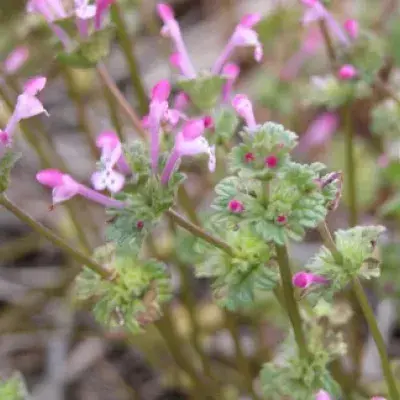
Thistle
Thistle (Cirsium spp.) is a perennial weed that grows in lawns, pastures, and disturbed sites. The plant has prickly leaves and purple or yellow flowers that bloom from May to September. Thistle can spread both by seed and through its root system, making it difficult to manage. Mowing will reduce thistle spread and should be done once a year, while herbicides can be used to treat troublesome areas. Hand-pulling is also an option, but it can be difficult due to the sharp prickles on the leaves. Planting grass species more competitive than thistle will help suppress its growth in turfgrass areas.

Virginia Buttonweed
Virginia buttonweed (Diodia virginiana) is an annual weed that grows in lawns, fields, and disturbed sites. It has slender stems covered in tiny hairs, with alternating lance-shaped leaves with pointed tips. The flowers are white or pink and appear between July and October. Virginia buttonweed spreads by seed and can be managed by regularly mowing to reduce seed production and hand-pulling or spot-treating with herbicide when necessary.
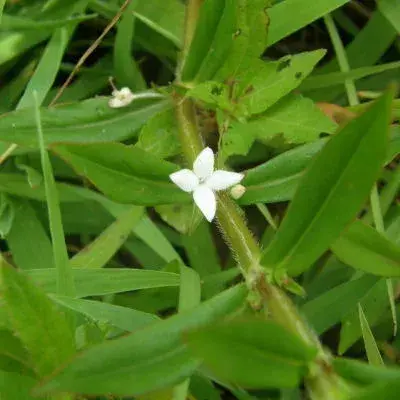
Wild Violet
Wild violet (Viola sororia) is a herbaceous perennial weed in the Violaceae family. It has heart-shaped leaves with scalloped edges that form a low-growing rosette pattern. The purple, white, or yellow flowers appear above the foliage between April and June. Wild violets spread by seed and can be challenging to eradicate. The best way to manage this weed is by reducing nutrients, water, and light that encourage growth and hand-pulling or spot-treating with herbicide when necessary.

Grassy Weeds
Grassy weeds, like crabgrass, are botanically related to lawn grasses. They have a similar appearance and development to that of lawn grass. The leaves of grassy weeds are not detached from the main stem but are narrow with a blade-like appearance. The leaves are produced one at a time in two vertical rows with veins within leaves that run parallel. The stems of these grassy weeds are usually round or flat. Since grassy weeds are often difficult to control once they establish themselves in your lawn, they are generally best controlled with preventive or pre-emergence herbicides. Pre-emergence herbicides need to be applied before germination, as they act by preventing establishment.
Crabgrass
Crabgrass (Digitaria sanguinalis) is a warm-season, annual weed germinating in early spring. It has a light green to yellowish-green leaves and stems that can reach up to 3 feet in height. The best control method for crabgrass is to mow frequently, use pre-emergent herbicides, and spot-treat with herbicide.
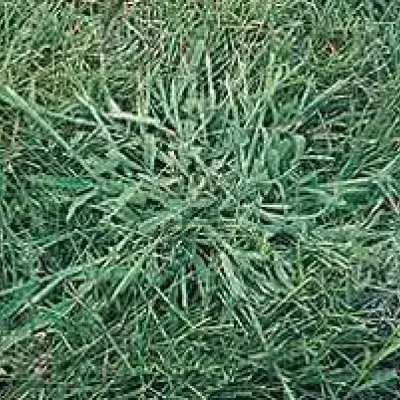
Dallis Grass
Dallis grass (Paspalum dilatatum) is a warm-season annual weed germinating in mid to late spring. It has dark green leaves with an upright growth habit and can reach heights up to 4 feet. The best control method for dallis grass is to mow frequently, apply pre-emergent herbicides, and spot-treat with herbicide.
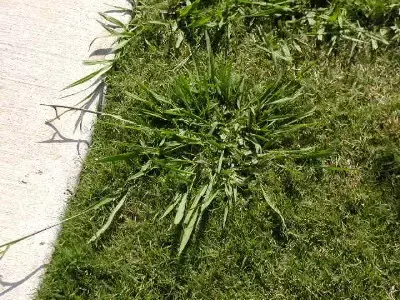
Goosegrass
Goose grass (Eleusine indica) is a coarse-textured, annual weed that grows in most lawns. It has rough, upright stems and bright green leaves arranged in pairs along the stem. The best control method for goose grass is to mow frequently and apply pre-emergent herbicides or spot-treat with herbicide.
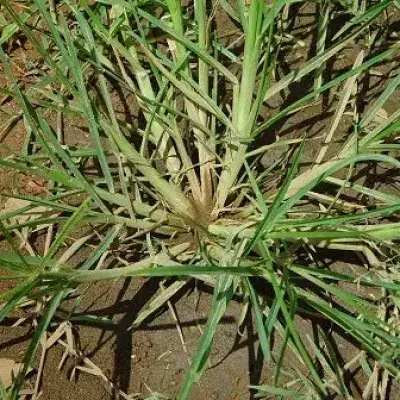
Johnsongrass
Johnsongrass (Sorghum halepense) is a warm-season grassy weed that can be difficult to control in lawns. It has thick, coarse leaves and large seed heads, making it unattractive on turf. The best control method for johnsongrass is spot-treating the area with herbicide or using a post-emergent herbicide specifically designed to target johnsongrass. Mowing can also help reduce its spread; however, it must be done regularly.
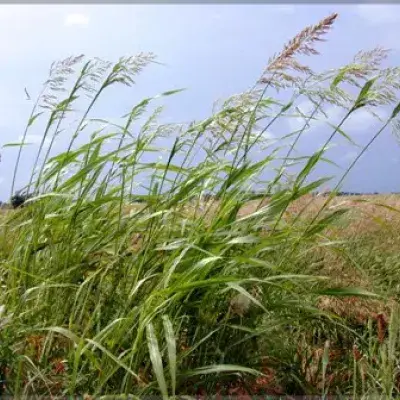
Sedges
Sedges, like nutsedge, have leaves that are similar in appearance and are often mistaken for grasses. Since herbicides used to control grassy weeds are generally not effective on sedges, it is important to distinguish between the two. Sedges have two key identifying characteristics: their leaves are arranged in three vertical rows and they have a triangular stem. Stems of grasses are commonly round or flat with leaves in two vertical rows.
Purple Nutsedge
Purple nutsedge (Cyperus rotundus) is a perennial weed with purple-tinged leaves and stems. It has a tough rhizome system that can quickly spread in turf if left unchecked. The best control method for purple nutsedge is spot-treating the area with a post-emergent herbicide.

Yellow Nutsedge
Yellow nutsedge (Cyperus esculentus) is a grassy weed with yellowish-green leaves and triangular stems. It has a waxy coating that helps it survive in dry and wet conditions. Spot-treating the area with herbicide is usually effective in controlling yellow nutsedge.
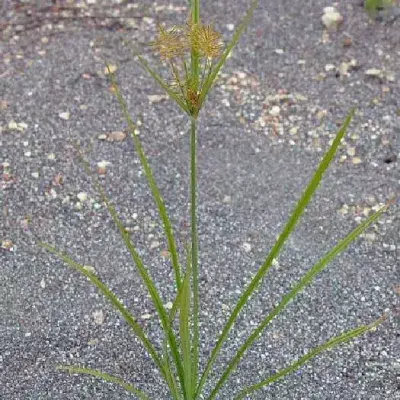
Life Cycles of Weeds
Each type of weed may have one of three basic life cycles of a weed: summer annual, winter annual, or perennial. These three different life cycles of weeds determine when the weeds will produce seeds, grow, and die. These factors help our lawn care experts determine the best plan of action for our weed control.
Summer Annuals
Weeds that are considered summer annuals complete a life cycle within 12 months. Summer annuals usually germinate in the spring, grow or develop during the summer, produce seeds, and die by the fall or after the first killing frost.
Winter Annuals
Winter annuals complete a life cycle in 12 months but generally overlap two calendar years. They germinate in late summer to early fall and then begin to develop. They remain dormant or semi-dormant throughout the winter, they flower the following spring then mature and die in late spring or early summer. Weeds that are considered summer and winter annuals reproduce and spread by prolific seed production, becoming a ready source of infestation and establishment when conditions are favorable.
Perennials
Perennial weeds live for more than two years and may regenerate indefinitely. A simple perennial weed, like a dandelion, may germinate from seed but produces a tap root that, when severed, can produce a new plant. A complex perennial weed can spread by seed as well as creeping above or below ground vegetative structures capable of bringing forth a new plant. Perennial weeds are often the most difficult to control mainly because they are an established plant that has already produced considerable vegetative reproductive structures. Repeated control measures then become necessary in order to get rid of these weeds. Removing the above-ground shoot growth does little toward long-term weed control. Herbicide treatments that act on the above and below ground structures are required for long-term weed control.
Schedule Your Weed ControlA Weed Control System You Can Trust
Herbi-Systems, Inc. has found the Turfgrass Weeds Identification Guide from the UT Institute of Agriculture to be an excellent resource. This resource helps us identify the type of weed we are working with for fast, and effective weed control in the Memphis area. Our lawn care experts are able to easily identify your weed control needs and eliminate the problem from your yard. Contact our experts today to schedule your treatment.

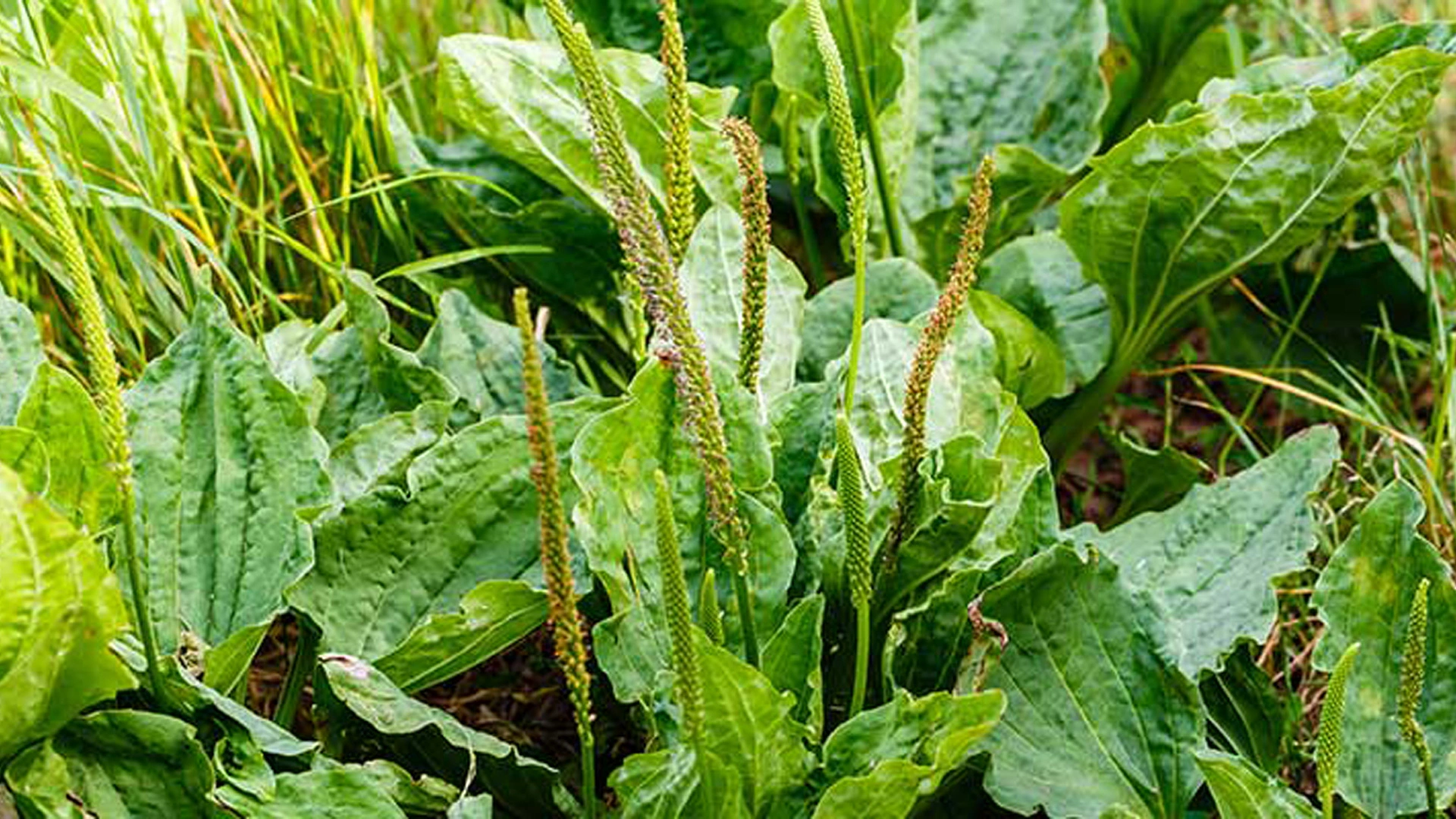

Comments (0)
Thanks for your comment!
Thanks for your feedback! Your comments have been successfully submitted! Please note, all comments require admin approval prior to display.
Error submitting comment!
There is a problem with your comment, please see below and try again.